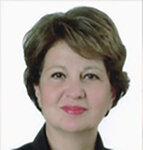Perspective of Teachers on the Cross-Curricular Pedagogical Approach for Children with Developmental Disabilities
DOI:
https://doi.org/10.52634/mier/2021/v11/i2/2174Keywords:
National Education Policy 2020, Cross-Curricular Pedagogical Approach, Sports Integration, Children with Developmental DisabilitiesAbstract
The National Education Policy 2020 has voiced its interest and need for an evolved pedagogy attuned to the importance of quality education for all. The policy stresses the importance of one such creative pedagogical approach called the cross-curricular pedagogical approach. This study aims to assess the level of awareness and perspective of primary teachers, on the cross-curricular approach for children with developmental disabilities. The sample includes 100 teachers (50 general teachers and 50 special educators) in inclusive schools of Delhi-NCR. The data was collected using the survey method. Results indicate that 56% of general teachers and 80% of special educators are aware of the term ‘cross-curricular pedagogical approach. However, only 22% of general teachers and 34% of special educators have attended workshops and training sessions on cross-curricular pedagogical approaches. Many of the general teachers and special educators expressed a positive perception towards forging linkages between subject disciplines for teaching children with developmental disabilities in inclusive classrooms.
Downloads
Metrics
Downloads
Published
How to Cite
Issue
Section
License
Copyright (c) 2021 Shaina Mary Paul, Naveen Singh

This work is licensed under a Creative Commons Attribution 4.0 International License.
The articles published in the MIER Journal of Educational Studies, Trends and Practics (MJESTP) are distributed under the terms of the Creative Commons Attribution License (CC BY 4.0), which permits unrestricted use, distribution, and reproduction in any medium, provided the original author and source are credited.
- Copyright on any open access article in the MIER Journal of Educational Studies, Trends and Practics (MJESTP) published by Model Institute of Education and Research (MIER) is retained by the author(s).
- Author(s) grant MIER a license to publish the article and identify himself/herself/themselves as the original publisher.
- Authors also grant any third party the right to use the article freely as long as its integrity is maintained and its original authors, citation details and publisher are identified.
- The Creative Commons Attribution License 4.0 formalizes these and other terms and conditions of publishing articles.
References
Barnes, J. (2015). An Introduction to Cross Curricular Learning. In P. Driscoll, A. Lambirth, & J. Roden (Eds.), The Creative Primary Curriculum (2nd ed.). Sage Publication.
Greenwood, R. (2013). Subject-based and cross-curricular approaches within the revised primary curriculum in Northern Ireland: teachers’ concerns and preferred approaches. Education, 41(4), 443-458. https://doi.org/10.1080/03004279.2013.819618
Jacobs, H. H. (1989). The Growing Need for Interdisciplinary Curriculum Content. In H. H. Jacobs (Ed.), Interdisciplinary curriculum: Design and implementation. Alexandria, VA: Association for Supervision and Curriculum Development.
jan-erik Romar, Bjorkgren, M., Snellman, J., Ruostekoski, A., & Juslenius, V. (2020). Preservice secondary subject teachers incorporating movement integration into classroom practice. Teaching and Teacher Education,94,103-119. https://doi.org/10.1016/j.tate.2020.103119
Lynch, S. (2016). A Practitioner’s Guide for Outstanding Cross-curricular Physical Education. Strategies, 29(3), 48-50. https://doi.org/10.1080/08924562.2016.1160474
Murphy, P. (2008). Defining pedagogy. In K. Hall, P. Murphy, & J. Soler (Eds.), Pedagogy and practice: culture and identities (p. 28-39). London: SAGE publications.
Palmer, J. (1991). Planning Wheels Turn Curriculum Around. Educational Leadership, 49(2), 57-60.
Thomson, P., Hall, C., & Jones, K. (2012). Creativity and cross-curriculum strategies in England: Tales of doing, forgetting and not knowing. International Journal of Educational Research, 55, 6-15. https://doi.org/10.1016/j.ijer.2012.06.003
Timmerman, V. (2017). Cross-curricular teaching: How does it work? . France Education International. Retrieved from france-education-international.fr/sites/default/files/atoms/files/ crosscut-cross-curricular-teaching-how-does-it-work-synthesis.pdf





















